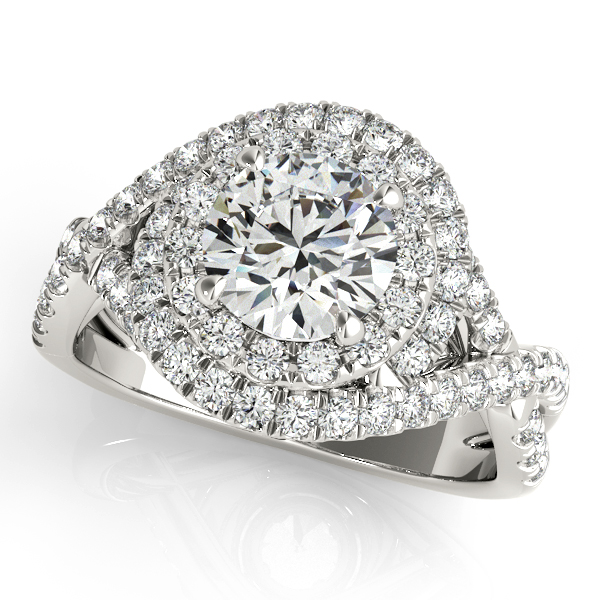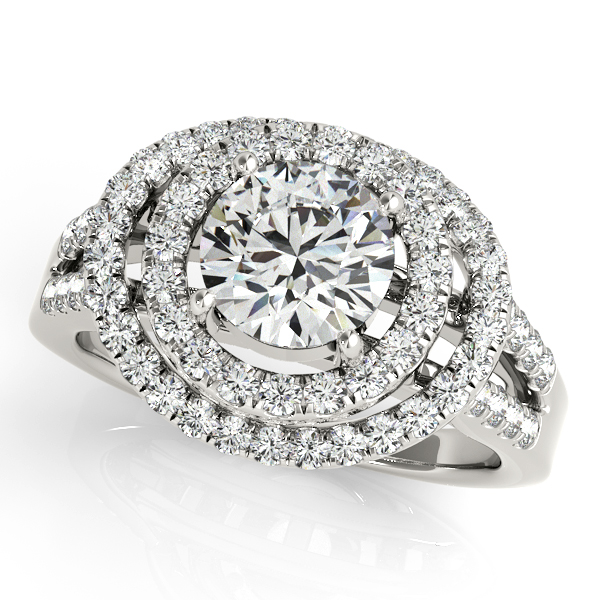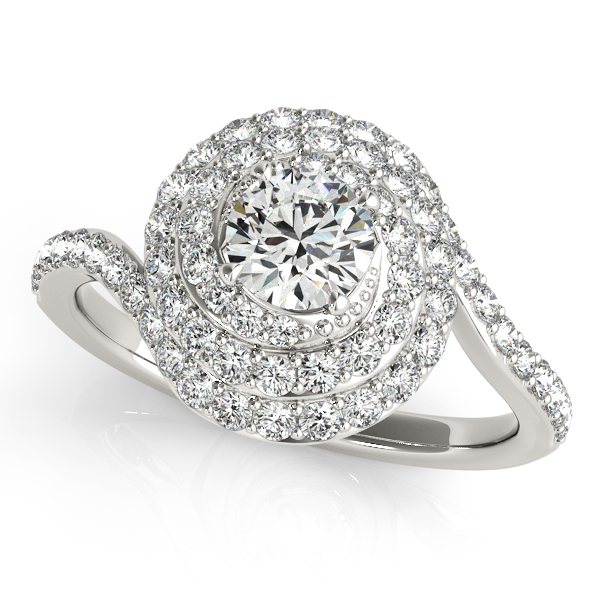- Free Shipping Over $75
- Easy 30-day returns
- Craftsmanship
- Signature Diamonds
- 360 Degrees
- Settings
14k Engagement Rings - A Modern Standard in Diamond Settings
14k Engagement Rings - A Modern Standard in Diamond Settings
14k Engagement Rings Are Chosen Over 18k Gold & PlatinumWe all know that 14k gold engagement rings are the most ubiquitous in the U.S. Similarly, we also know that 18k gold is more high end, and contains more actual gold. Additionally, platinum is an even more luxurious metal, and platinum engagement rings offer the ultimate upscale experience. If so, then why is 14k gold the preferred base metal for the vast majority of diamond engagement rings in the U.S.? If cost were the answer, then 10k gold would logically have been declared the winner, as its price tag is cheaper than 14k gold. And yet, 14k gold engagement rings flood store inventories more than in every other metal. In fact, some stores only offer 14k gold diamond settings, and will only produce settings in other metal variations for special, custom orders. A Comprehensive Look at 14k Engagement RingsGold purity certainly plays a substantial role in the demand for diamond engagement ring settings, but this role may surprise you. Only 58.3% of a 14k gold diamond setting consists of pure gold. The rest is composed of other metals, with the most common being silver, zinc, nickel and copper. An 18k gold setting consists of 75% pure gold. The standard for platinum is 95% purity. Given these facts, it would be logical to conclude that 18k gold and platinum are superior and should be chosen over 14k gold. However, two additional factors underneath the surface are durability as well as allergy considerations, both of which combine with cost and ultimately drive demand for specific base metals in diamond settings. Combine Durability with Cost and 14k Gold Engagement Rings Rule the World When browsing expensive diamond engagement rings with the intention of committing to one for the rest of your life, durability is the name of the game. It may seem logical that the more pure the diamond setting, the better. However, pure gold is soft, fragile and prone to damage. Pure gold will also wear out significantly faster than its counterpart, combined with more rigid metal alloys. When you look at this infinity diamond engagement ring, featuring a round diamond halo with side stones, see if you can pinpoint the number of vulnerabilities where it could crack or break, due to normal daily wear and tear. This diamond setting alone, without stones, weighs almost a full six grams - that is a considerable amount of metal. Accidentally tap it against a kitchen cabinet, a door knob or a bathroom faucet, and the fate of your diamond engagement lies in its base metal. In 14k white gold, this diamond setting comes in at $950. Switch to 18k white gold or platinum, and your cost climbs to $1,250 and $1,650, respectively. In addition, given the wide base of the setting, coupled with the thinner strands of the split shank and well over 100 diamond prongs, 14k gold will undoubtedly render the most favorable balance of cost and durability. Diamond Settings Can Cause Allergies - What Metals Are You Allergic To? Nickel is one of the metals commonly used in diamond settings. Unfortunately nickel is also one of the biggest allergens, capable of causing irritation, discoloration, skin rashes and so forth. While 14k gold engagement rings do not typically contain substantial amounts of nickel, a severe allergy to the metal may cause a reaction. The more metal in a diamond setting, the higher the chances of an allergic reaction. For instance, this double halo diamond engagement ring features a split shank, round cut diamonds and the setting alone weighs over 7.5 grams! Durability aside, if this is your diamond setting of choice and you have a known allergy to any of the metals used in the production of engagement rings, it may serve you well to purchase this engagement ring in platinum. When to Choose 18k Gold Over 14k Gold Engagement Rings For some of us with less active lifestyles and fewer allergies, the softer 18k gold is a viable option. Since 18k gold offers a richer, more concentrated color, it can render a slightly more vivacious look of the finished diamond engagement ring. Looking at the double halo bypass engagement ring shown above, the shank is relatively thin, so 18k gold would help bring out the sparkle. On the other hand, purchasing this diamond setting in 18k gold requires discipline. More specifically, it would be wise to take the ring off when working out, washing dishes and applying lotion, among other things. Additionally, 18k gold engagement rings require more frequent maintenance, as the settings need to be polished and rhodium plated, among other things, in order to protect them from long-term damage. The Choice of 10k, 14k and 18k Gold or Platinum Comes Down to YouWith so many factors in the mix, choosing the right base metal for your diamond engagement ring comes down to your unique situation. No one knows your allergies, lifestyle and tastes and preferences better than you. Armed with the facts, consider your allergies, lifestyle and budget to make an informed decision. In most cases, the difference between 14k and 18k gold is relatively subtle. One of the major benefits of platinum engagement rings is that they require relatively little maintenance, and are often a great choice for people with severe allergies. So consider the factors, discuss the options with a professional and make it a win! |












